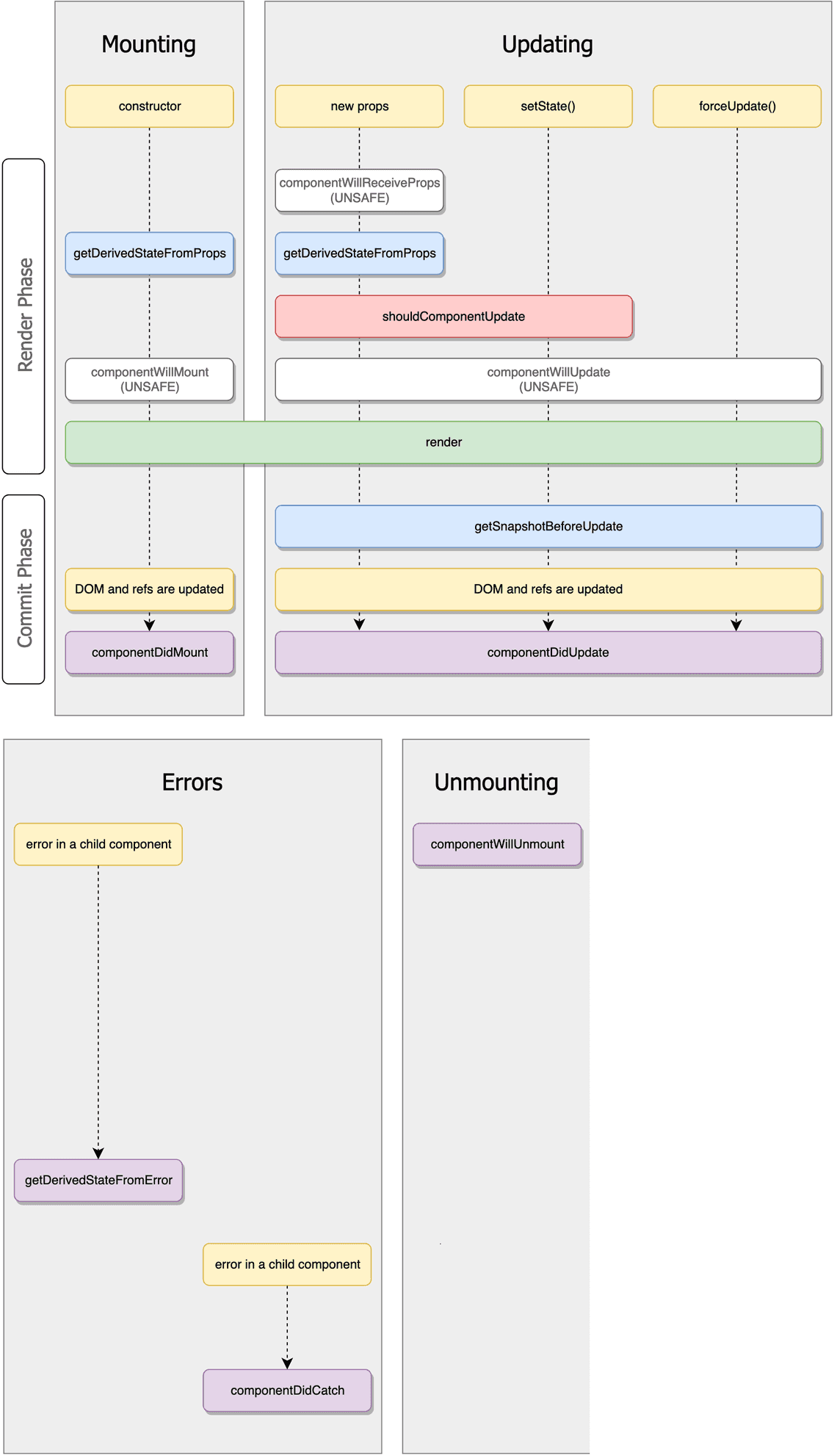Lifecycle methods

Background
In applications with many components, it’s very important to free up resources taken by the components when they are destroyed.
We want to set up a timer whenever the Clock is rendered to the DOM for the first time. This is called mounting in React.
We also want to clear that timer whenever the DOM produced by the Clock is removed. This is called unmounting in React.
We can declare special methods on the component class to run some code when a component mounts and unmounts:
The componentDidMount() method runs after the component output has been rendered to the DOM. This is a good place to set up a timer:

componentDidMount()
componentDidMount() {this.timerID = setInterval(() => this.tick(),1000);}
componentWillUnmount()
Note how we save the timer ID right on this (this.timerID).
While this.props is set up by React itself and this.state has a special meaning, you are free to add additional fields
to the class manually if you need to store something that doesn’t participate in the data flow (like a timer ID).
We will tear down the timer in the componentWillUnmount() lifecycle method:
componentWillUnmount() {clearInterval(this.timerID);}
Full example
class Clock extends React.Component {constructor(props) {super(props)this.state = { date: new Date() }}componentDidMount() {this.timerID = setInterval(() => this.tick(), 1000)}componentWillUnmount() {clearInterval(this.timerID)}tick() {this.setState({date: new Date()})}render() {return (<div><h1>Hello, world!</h1><h2>It is {this.state.date.toLocaleTimeString()}.</h2></div>)}}const root = ReactDOM.createRoot(document.getElementById('root'))root.render(<Clock />)
static getDerivedStateFromProps()
getDerivedStateFromProps is invoked right before calling the render method, both on the initial mount and on subsequent updates. It should return an object to update the state, or null to update nothing.
getSnapshotBeforeUpdate()
getSnapshotBeforeUpdate() is invoked right before the most recently rendered output is committed to e.g. the DOM. It enables your component to capture some information from the DOM (e.g. scroll position) before it is potentially changed. Any value returned by this lifecycle method will be passed as a parameter to componentDidUpdate().
For example:
class ScrollingList extends React.Component {constructor(props) {super(props)this.listRef = React.createRef()}getSnapshotBeforeUpdate(prevProps, prevState) {// Are we adding new items to the list?// Capture the scroll position so we can adjust scroll later.if (prevProps.list.length < this.props.list.length) {const list = this.listRef.currentreturn list.scrollHeight - list.scrollTop}return null}componentDidUpdate(prevProps, prevState, snapshot) {// If we have a snapshot value, we've just added new items.// Adjust scroll so these new items don't push the old ones out of view.// (snapshot here is the value returned from getSnapshotBeforeUpdate)if (snapshot !== null) {const list = this.listRef.currentlist.scrollTop = list.scrollHeight - snapshot}}render() {return <div ref={this.listRef}>{/* ...contents... */}</div>}}
Tags
Share
Table Of Contents
Related Posts
Quick Links
Legal Stuff
Social Media
